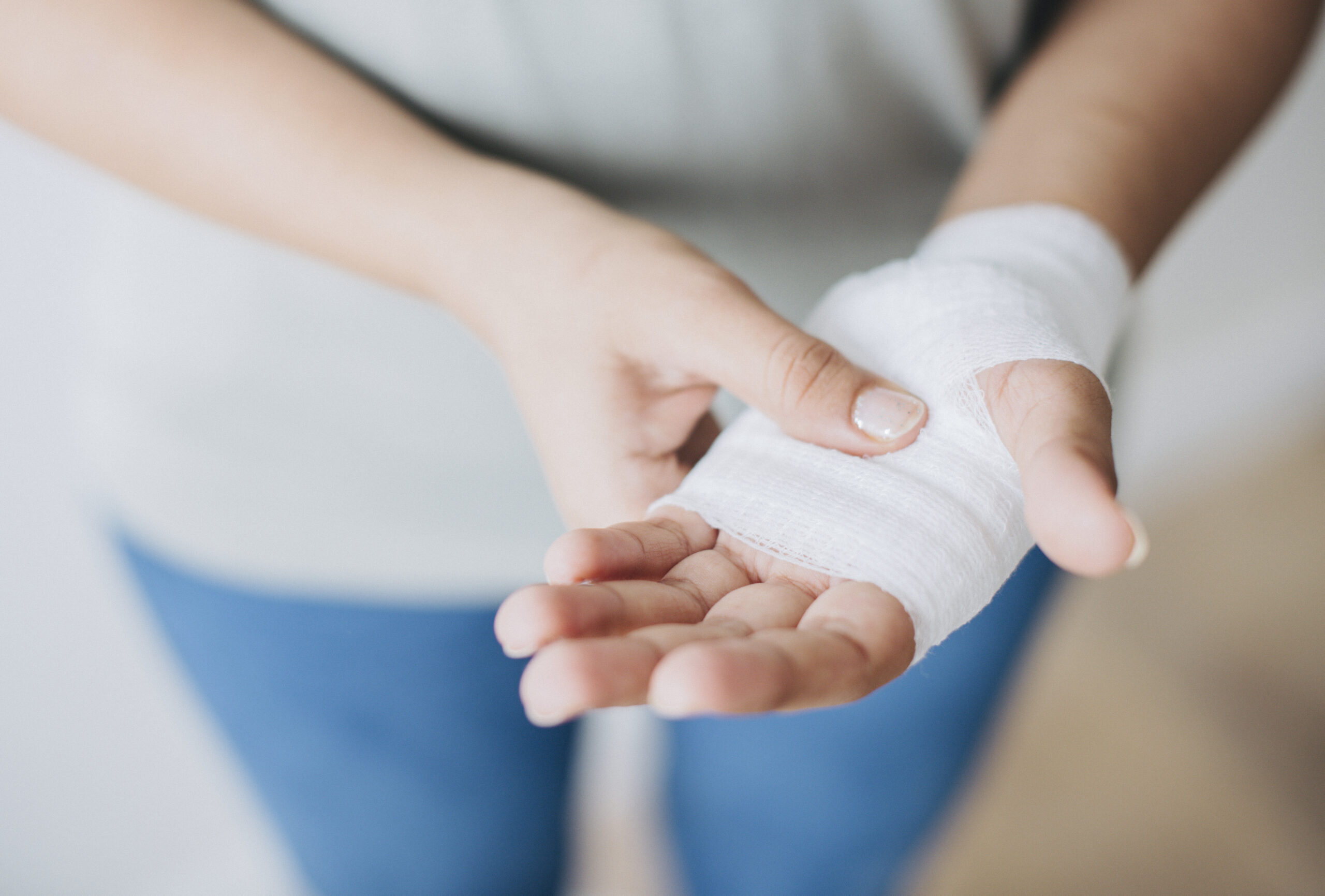
Burn injuries are severe and painful, often leaving lasting scars and impacting a person’s quality of life. While traditional treatments focus on pain relief and preventing infection, Red Light Therapy (RLT) has emerged as a new option for enhancing recovery. This non-invasive therapy uses specific wavelengths of red and near-infrared light to speed up healing, reduce inflammation, and improve the appearance of scars. Let’s explore how RLT works, its benefits, and why it could be a game-changer for burn recovery.
Red Light Therapy, also known as Photobiomodulation or Low-Level Light Therapy (LLLT), involves exposing the skin to specific wavelengths of light, typically between 600 and 1000 nanometers. These wavelengths penetrate the skin and are absorbed by the mitochondria in cells. This process triggers a series of biological reactions that promote healing and tissue repair.
When red light penetrates the skin, it interacts with mitochondria, the energy producers of the cell. This interaction boosts the production of adenosine triphosphate (ATP), which is the main energy source for cells. With more ATP, cells function better and repair damaged tissues faster. Additionally, red light therapy increases blood flow, delivering more oxygen and nutrients to the wound area. It also promotes collagen production, which is essential for tissue structure and scar prevention.
Red Light Therapy offers several benefits for people recovering from burns, targeting different stages of the healing process:
1. Accelerates Wound Healing
RLT stimulates the formation of new blood vessels (angiogenesis) and enhances microcirculation. This increased blood flow ensures that healing tissues get the oxygen and nutrients they need to repair quickly. By speeding up tissue regeneration, RLT helps burn wounds close faster, reducing the risk of infection.
2. Reduces Pain and Inflammation
Burn injuries trigger a strong inflammatory response that causes pain, redness, and swelling. Red Light Therapy reduces the levels of pro-inflammatory molecules like interleukin-1β (IL-1β) and tumor necrosis factor-α (TNF-α). At the same time, it boosts anti-inflammatory cytokines, such as interleukin-10 (IL-10). This balance helps decrease pain, ease swelling, and create a more comfortable healing environment.
3. Improves Scar Appearance
Scarring is a common concern for burn survivors. Red Light Therapy increases the production of collagen types I and III, which are essential for healthy skin formation. By promoting organized collagen production, RLT minimizes the risk of developing thick, raised scars. The result is softer, more flexible skin with a smoother appearance.
4. Promotes Skin Cell Regeneration
The therapy enhances the migration of new skin cells to the wound area, a process called re-epithelialization. This helps the skin rebuild its protective barrier faster, reducing healing time and minimizing scar formation.
Burns are categorized based on their depth and severity:
Red Light Therapy is particularly effective for first- and second-degree burns, promoting faster healing and reducing scar formation. However, even for more severe burns, RLT can support the healing process and improve long-term outcomes.
1. Increases Cellular Energy (ATP) Production
Red Light Therapy enhances the activity of cytochrome c oxidase, a component in the mitochondrial electron transport chain. This boost in activity leads to more ATP production, giving cells the energy needed to repair tissues and fight off infection.
2. Promotes Collagen Production
RLT stimulates the synthesis of collagen and other structural proteins, which are essential for wound healing. Higher collagen levels improve skin elasticity and texture, reducing the likelihood of scar tissue formation.
3. Regulates the Inflammatory Response
Inflammation is a natural response to injury, but too much can delay healing. Red Light Therapy balances pro-inflammatory and anti-inflammatory molecules, creating an environment that supports faster tissue repair with less pain and swelling.
Study 1: Red Light Therapy for Second-Degree Burns
A clinical trial investigated the effects of Red Light Therapy on second-degree burns in patients dependent on glucocorticoids. The results showed that red light (630-650 nm) significantly reduced wound drainage, pain, and inflammation, promoting faster wound closure.
Study 2: Photobiomodulation and Skin Grafting in Children
Another study compared Red Light Therapy with traditional skin grafting in children with deep burn ulcers. The researchers found that RLT reduced the risk of scar formation and improved overall wound healing, making it a promising alternative to invasive procedures.
Study 3: Review of Red Light Therapy for Wound Care
A comprehensive review highlighted the benefits of Red Light Therapy for wound management, noting its ability to enhance healing, reduce pain, and improve scar outcomes. The study concluded that RLT is an effective, non-invasive option for wound care, suitable for both clinical and home use.
For optimal results, it’s essential to use a device that emits wavelengths between 630 and 850 nm. Handheld devices or full-body panels are ideal for targeting burn areas. Here’s a general protocol to follow:
Always consult with your healthcare provider before starting any new treatment, especially if you’re dealing with severe burns.
Red Light Therapy should be viewed as a complementary treatment that works best when combined with standard burn care practices, like wound cleaning, topical antibiotics, and pain management. It’s not a replacement for medical treatment but a supportive therapy that enhances healing and reduces complications.
Find our range of devices for red light therapy HERE.
Red Light Therapy is a powerful tool for supporting burn recovery. By boosting cellular energy, reducing inflammation, and promoting collagen production, RLT accelerates healing and improves scar appearance. As research continues to validate its benefits, Red Light Therapy is poised to become a standard part of burn care, offering hope for faster and more complete recovery.
If you’re considering Red Light Therapy for burn recovery, consult your healthcare provider to ensure it’s right for you. With consistent use and proper guidance, RLT can be a valuable addition to your healing journey, helping you achieve healthier skin and a better quality of life.
Sources: